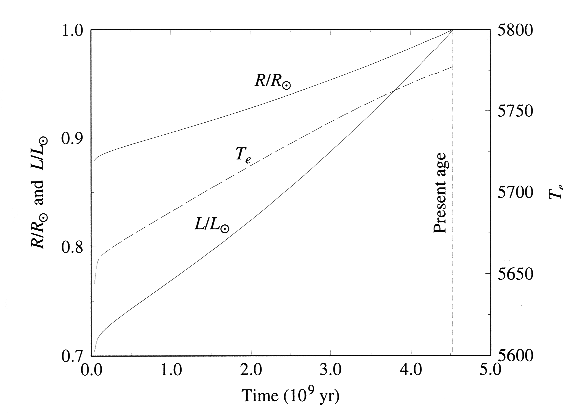Using scaling arguments,
we have seen that the average density, core pressure and core temperature
are as given in the table below. These are contrasted with the more
exact values determined from computer models of the Sun's interior (the
so-called standard model). We
also show the mass fraction of hydrogen (X) and of helium (Y)
at the surface and at the core.
|
|
|
||
| Core Temperature |
|
Central Temperature |
|
| Core Pressure |
|
Central Pressure |
|
| Average Density |
|
Central Density |
|
| X at surface |
|
X at core |
|
| Y at surface |
|
Y at core |
|
The Sun is about 4.52 billion years old, and has been converting hydrogen to helium in its core all that time. More than half of the hydrogen has been used up already, in the core, so the Sun is about middle-aged. The solar model can be traced in time from an initial composition through to its present age. As the composition changes due to using up the hydrogen, the other parameters of the Sun such as its radius, temperature, and luminosity must change as well. According to the figure below, the solar radius has increased by about 12% over its lifetime, the surface temperature has increased by about 20%, and the luminosity (4pR2sT4) has increased by 30%. However, this implies about a 5% increase in the last 500 million years, and it is not clear that such an increase is compatible with known Earth climate history.

Theoretical understanding of how the radius, temperature, and luminosity of the Sun has
changed over the lifetime of the Sun. The changes may be more extreme than actually
occurred, given what we know of Earth's climate history. Figure from Carroll and Ostlie,
Introduction to Modern Astrophysics, Addison-Wesley, New York, 1996.